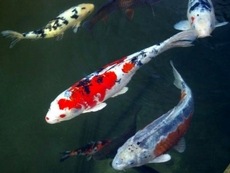 Nothing like a rainy weekend to catch up on all those tasks held in abeyance. The lack of fish available since the creek was blown out in early January, reminded me of my need to learn more of the lifecycle of the common carp.
Nothing like a rainy weekend to catch up on all those tasks held in abeyance. The lack of fish available since the creek was blown out in early January, reminded me of my need to learn more of the lifecycle of the common carp.
It’s a big mystery, one day the creek has them available, a couple weeks later there aren’t any. I guessed food source or spawning migration, but didn’t know enough about either to be certain of the answer.
The Hideous Jabbering Head of Izaak Walton has been on sabbatical of late, so I was forced to go to his original tome.
The Carp is the Queen of Rivers: a stately, good and very subtle fish. The Carp, if he have water-room and good feed, will grow to a very great bigness and length; I have heard, to be much above a yard long.
He is a very subtle fish, and hard to be caught. If you will fish for a Carp, you must put on a very large measure of patience, especially to fish for a River-Carp.
The food angle is doubtful as I could only find them in a single pool despite searching for them over nearly eight miles of creek. The weeds remained after the fish left, so best guess is a spawning migration.
They’re eating machines,” says Win Taylor, a fisheries biologist with the North Carolina Wildlife Resources Commission. He’s talking about the grass carp. In the summer of 2002, 21,000 of the vegetarian fish were turned loose in Lake James. By that time, hydrilla had claimed 500 acres of the lake; but since the carp’s arrival, there’s been little sign of the territorial weed. In certain circles, the grass carp’s savage eating habits have earned it the nickname “H-Bomb.
The only puzzle remaining is which direction they came from; the creek runs 40 miles north and ends at the dam face of Clear Lake, I assume they can’t get past the dam. South of me is a similar morass that may only connect to the Sacramento River in wet years.
A study in South Carolina with radio tagged fish suggests the average yearly movement of Grass Carp is around 9 miles, the maximum observed was 27 miles. The fish I caught weren’t overachievers and the statistics suggest I walk another mile and I should find them. Normally I would pack additional water and an extra sandwich, but there’s nothing like an election year to remind me statistics are often an overly optimistic guess…
Technorati Tags: grass carp, common carp, carp movement, fishing
